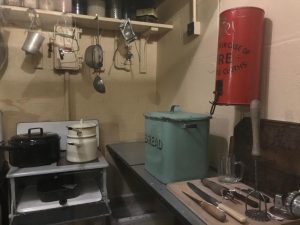Alan Jay Lerner was a prominent figure in the world of musical theatre. Known for his eloquent lyrics and engaging storytelling, Lerner made a significant impact on both American and British theatre. He penned the lyrics and libretto for numerous hit musicals, including My Fair Lady, which premiered at the Theatre Royal Drury Lane in London. Let’s explore the life and work of Alan Jay Lerner, and delve into the time he spent in London and the legacy he left behind.

Early Life and Career:
Born on August 31, 1918, in New York City, Alan Jay Lerner grew up in a well-to-do family, with his father Joseph owning a successful chain of dress shops. Lerner attended prestigious schools, including Choate and Harvard University, where he began writing lyrics for the annual Hasty Pudding Club show. After serving in the United States Navy during World War II, Lerner moved back to New York to pursue a career in radio.
In 1942, Lerner met the Austrian composer Frederick Loewe, and they began their iconic collaboration. Their partnership would span three decades, producing some of the most memorable and successful musicals in theatre history. Their first hit came in 1947 with the musical Brigadoon, followed by Paint Your Wagon in 1951.
My Fair Lady and London:
Perhaps Lerner and Loewe’s most famous work, My Fair Lady, premiered at the Theatre Royal Drury Lane in London on April 30, 1958. This musical adaptation of George Bernard Shaw’s play Pygmalion tells the story of Eliza Doolittle, a Cockney flower girl who is transformed into a sophisticated lady through the tutelage of the phonetics professor Henry Higgins. With unforgettable songs such as “Wouldn’t It Be Loverly,” “I Could Have Danced All Night,” and “On the Street Where You Live,” My Fair Lady was an instant success, both critically and commercially.
The Theatre Royal Drury Lane, one of London’s oldest and most historic theatres, proved to be the perfect venue for My Fair Lady’s premiere. The lavish production, directed by Moss Hart and starring Rex Harrison as Henry Higgins and Julie Andrews as Eliza Doolittle, captivated London audiences. The show’s run lasted for an impressive five years and more than 2,000 performances, with a record-breaking 2,281 performances. It became the longest-running production in the theatre’s history at that time.
During the London run of My Fair Lady, Lerner and his then-wife, the actress Marion Bell, made their home in the city. They lived in a flat in Mayfair, just a short distance from the theatre. London proved to be an inspiring city for Lerner, who continued to work on new projects and collaborations while living there.
Later Works and Life in London:
Following the success of My Fair Lady, Lerner and Loewe continued to create successful musicals, including Camelot (1960) and Gigi (1958), the latter of which was adapted into a film and earned them an Academy Award for Best Original Song. Lerner also collaborated with other composers, such as Burton Lane for On a Clear Day You Can See Forever (1965) and Andrew Lloyd Webber for The Phantom of the Opera (1986), although he ultimately left the project before its completion.
Despite the ups and downs in his personal life – Lerner was married eight times – he remained a prolific and respected figure in the theatre world. He continued to live in London for many years, maintaining a close connection to the city and its vibrant theatre scene.
Alan Jay Lerner passed away on June 14, 1986, in New York City, but his influence on musical theatre remains strong. His lyrics and storytelling have left an indelible mark on the hearts of theatregoers and performers alike. His work, particularly My Fair Lady, continues to be celebrated and revived in theatres around the world.
Blue Plaque at Theatre Royal Drury Lane:
In recognition of Alan Jay Lerner’s significant contribution to the world of theatre, a blue plaque was installed at the Theatre Royal Drury Lane in London. The plaque commemorates the premiere of My Fair Lady at the historic theatre and serves as a reminder of Lerner’s lasting impact on musical theatre. Blue plaques mark the locations of notable historical events and celebrate the achievements of important figures.
The Theatre Royal Drury Lane has a rich history dating back to 1663, and Lerner’s work with My Fair Lady is now forever intertwined with that legacy. As the theatre continues to host new productions and showcase emerging talent, the blue plaque serves as a reminder of the enduring appeal of Lerner’s work and the importance of his time spent in London.
His most famous work, My Fair Lady, remains a testament to his genius and continues to captivate audiences worldwide. The Theatre Royal Drury Lane, where the show premiered, stands as a testament to Lerner’s incredible talent and the time he spent in the city that inspired him. The blue plaque at the theatre and also the memorial plaque at St Paul’s Church (also known as the Actor’s Church) in Covent Garden serve as lasting tributes to Lerner’s impact on the world of musical theatre and the enduring legacy he left behind in London.



